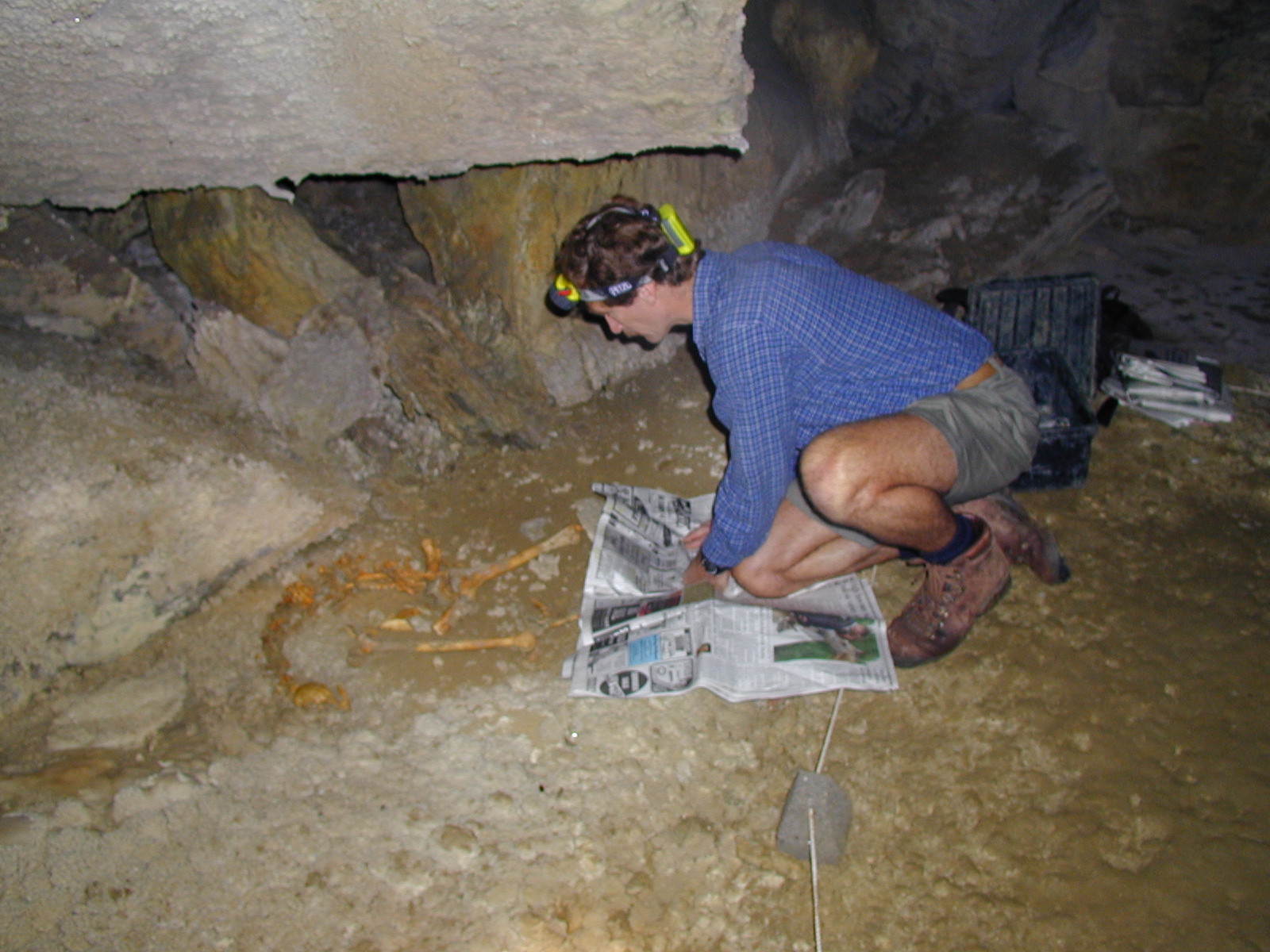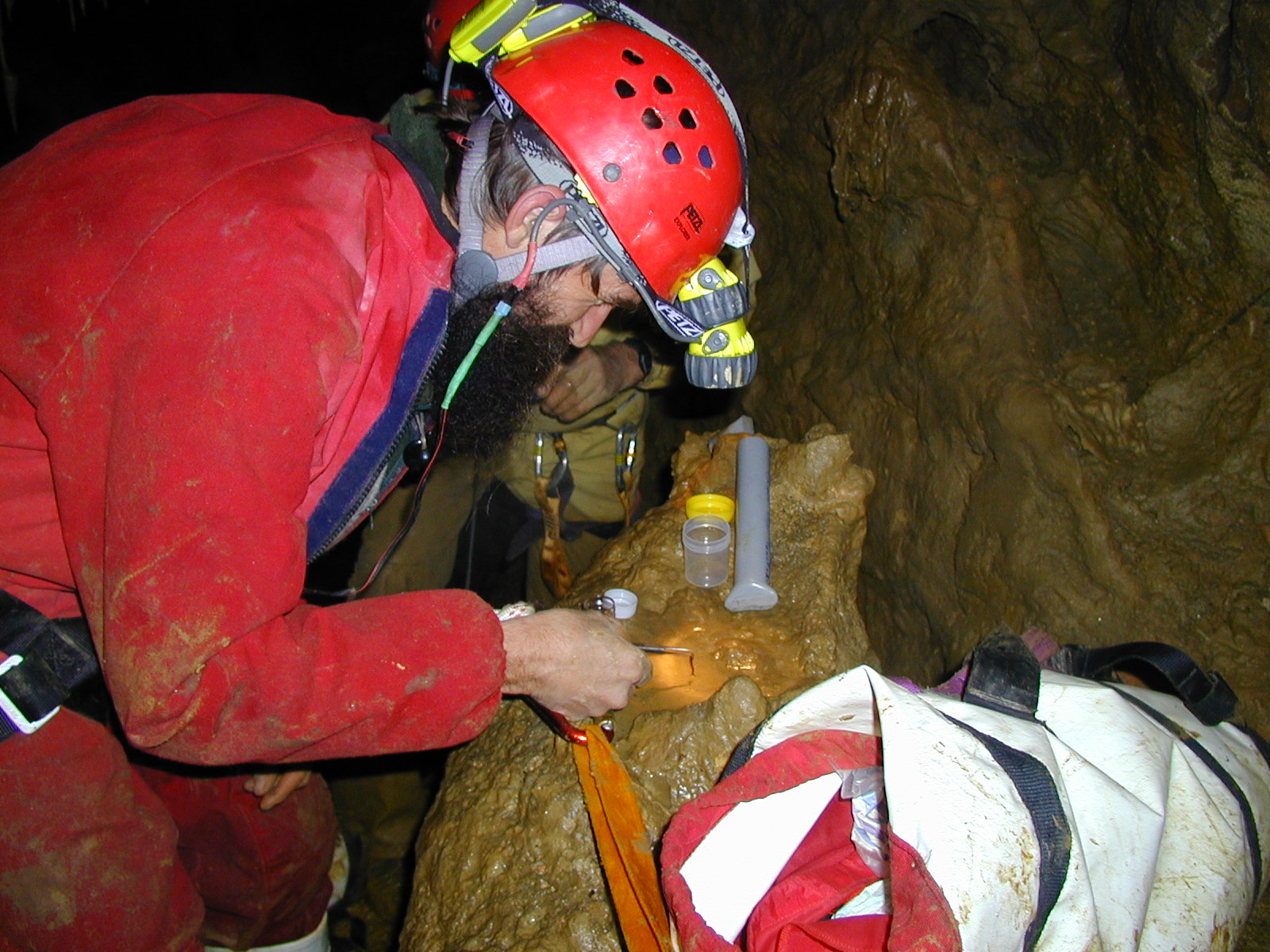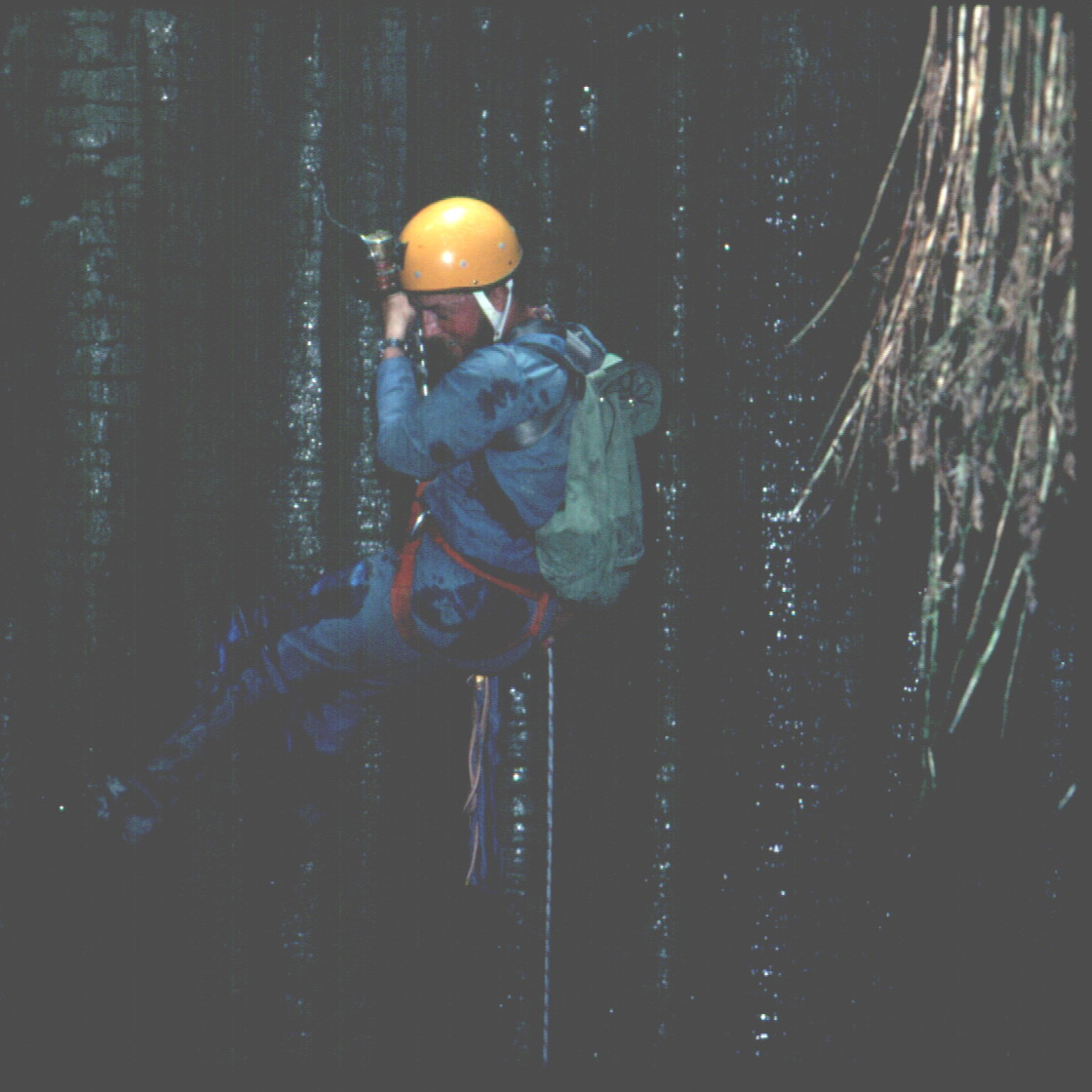Where to now for the Department of Conservation on the West Coast?
Caves and karst management is recognised internationally as a specialised field of work. Like land surface areas the subterranean systems have their own full range of natural, cultural and historic values and associated management matters.
The caves and karst of the West Coast Te Tai o Poutini of New Zealand's South Island hold significant values, providing representativeness at international, regional and local levels. The Department of Conservation (DOC) manages most of the karst areas on the West Coast, which are found in Karamea, Charleston, Punakaiki, Greymouth and Haast. Paparoa and Kahurangi National Parks are renowned worldwide for their karst formations.
Prior to the year 2000 management by DOC focused on the National Parks with 14 caves being actively managed. The transfer of Timberlands forest blocks to the Department in 2000 increased karst areas around Westport three-fold and doubled Greymouth limestone assets.
'Where to Now' was a question that the Department of Conservation (DOC), West Coast/Tai Poutini asked itself in 2001 after the land transfer. While there is deeper understanding four years on of the extent and complexity of this limestone inheritance, this is still a pertinent question to ask periodically, to ensure management priorities are updated as necessary.
1. Strategic Directions
Geographic isolation has had a major influence on New Zealand's heritage, being an advantage and a burden at the same time. Unique plants and animals evolved without threat until man's arrival brought practices and species from other places that posed, and pose today, significant threats and adverse effects on the health of the natural environments.
The Department operates under Acts of Parliament to achieve its mandate of protection of natural, historic and cultural values on one hand and the fostering of recreation and appropriate use on the other. The Conservation Act 1987 is the primary act, with others relevant to caves and karst being the National Park Act 1980, the Reserves Act 1977, Native Plants Protection Act 1934 and the Wildlife Act 1953. The National Karst Guideline 1999 and locally developed policies and procedures assist staff with their work.
Natural heritage covers natural ecosystems and habitats and the associated indigenous land, freshwater and marine species. Historic heritage management contributes to the understanding and appreciation of New Zealand's history and cultures and covers natural features and land as well as human associations. The department has obligations under the Treaty of Waitangi whereby relationships are sought and maintained with tangata whenua (iwi Maori).
KARST RESOURCES
The integrity of a karst system is dependent on the relationship between water, land, vegetation, soils and people. In general it is accepted that karst sites are vulnerable to human impact. Damage to fragile underground values is virtually irreversible. In the context of New Zealand's limestone landscapes the West Coast karst is relatively unmodified. Hydrological systems link catchments, with water often submerging in one valley system to a resurgence in the next. The Coast is lucky in that most of its karst is forest covered and relatively unmodified. It does not have to deal with the adverse consequences of surface activities such as occurs in the Waikato. Ground water contamination is a major issue there and is difficult to resolve.
Strategic planning has classified caves into categories to assist management direction.
The classification assessed representativeness, significance and importance and was collated into an inventory along with information on the history of use, potential threats and essential work. The information collectively determines the type of access that should be allowed.
VALUES
- Fossil deposits are found in at least three-quarters of caves on the West Coast. Honeycomb Hill caves, Megamania and Te Ana Titi contain deposits of international significance. These caves are classified as 'museum' caves.
- Some fauna and flora are found only in karst e.g., cave entrance ferns and grasses, cave spiders and cave weta. Other creatures adapt to life underground, such as de-pigmented koura.
- Tangata whenua (iwi Maori) have a cultural relationship to many karst locations with regard their relationship with shelter, food and water and with landform personification.
- Caves and karst are appreciated and used by local communities, recreationalists, tourist operators, visitors and the education sector.
IMPACTS
- Impacts caused by humans stem from the introduction of artificial light and of organisms or materials such as concrete, ropes, tapes, climbing aids, food scraps. Air movements and microclimates can change; erosion, tracking and compaction of cave floors occur with regular use. Alteration of any part of a cave will have an effect on the wider cave. Speleothems or calcite decorations comprise many forms, often fragile, sometimes rare and unusual. Speleothems and cave soils are easily damaged. Caves and cave soils are time-vaults of heritage, and much is still to be learnt about what they contain. DNA analysis and associated technologies can improve understanding.
2. Operational Management
HISTORY
Since the inception of the department caves and karst work on the Coast has had variable levels of attention. In the mid 1980s interest and ability was high. Attention declined when experienced staff moved on, to be re-activated in the mid 1990s. From then there has been a steady though relatively low-key involvement that increased in impetus following the Year 2000 transfer of ex-Timberland's land to the Department.
KEY STEPS
- In 1999 West Coast adopted the Waikato Conservancy's caves and karst inventory system. As at April 2005 over 100 caves have been inventoried Conservancy-wide. The majority are found in the Buller, from Karamea to Punakaiki. There are several recorded around Greymouth and one recorded at Haast.
- A baseline photo-monitoring programme was established in Buller caves in 1999.
- In 2000 the NZ Government halted large scale logging of indigenous forests and transferred forest blocks from Timberlands NZ to DOC. In this transfer the Department inherited over 88 recorded caves. Added to those already actively managed in Kahurangi and Paparoa National Parks the total of inventoried caves is over 100.
- In 2001 a management plan was written for Honeycomb Hill Caves Specially Protected Area.
- Palaeontological advice in 2003 helped realise the extent, complexity, significance, representativeness and vulnerability of the fossil resource. Te Ana Titi cave was confirmed as a highly significant fossil, geomorphological and invertebrate site and gated in 2004.
- In 2004 Buller staff participated in palaeontological training that assists fieldwork significantly.
- A Visitor Access Guideline has been drafted and work on this document will be advanced in 2005.
- Routine site condition monitoring occurs in caves that have regular visitation.
 |  |
| Trevor Worthy, palaeontologist and caver, assessing fossil bones, Metro/Te Ananui cave. | Close up of fossil bird bones, Metro/Te Ananui. |
NOTE: Current thinking of palaeontologists is to leave the bones in situ as DNA technologies have improved to the extent that a spoon-full of soil taken from beside a bone can determine what the bird was, its gender, how old it is, what lived on it.
WEST COAST KARST INVENTORY
West Coast sites were inventoried over a twelve month period in 2001/02 after which DOC contracted palaeontological advice and listened to the opinions of associate groups and interested individuals.
Geopreservation rankings were assigned and these help to determine the sites to which effort should be directed, so effort and resources are used to the best advantage. Ranking may change as more information about sites becomes available i.e. cave flora or fauna have not been assessed to any degree.
OTHER WORK
A geology graduate has been contracted to develop a 'Best Practice' guideline (due September 2005) that focuses on cave monitoring procedures and on impact control methods.
Working with licensed operators is an important task, there being two major concessionaires on the West Coast, one in the Honeycomb Hill Caves at Karamea and one in the Metro/Ananui cave near Charleston. As well, regular contact is made with NZSS and regional caving groups.
The Department recognises it cannot do all its protection and use work itself and appreciates having good relationships with key cave and karst users.
3. Ten Year Outlook: 2004 to 2014
STRATEGIC OUTCOMES
- Develop a Buller Area Caves Asset Management System (CAMS) using the principle of asset management established successfully for other areas of work (such as visitor assets, fences and historic assets) to provide the framework to allow inspection, recording, monitoring and maintenance of the resource.
- Establish Te Ana Titi cave system as a Specially Protected Area.
- Fully assess Megamania cave to determine if the cave warrants protection as a Specially Protected Area.
- Assess Bullock Creek for nomination as a RAMSAR site.
- Complete the assessment of ex-TWC blocks.
- Review the Honeycomb Hill Caves SPA Management Plan.
- Complete Visitor Access Guidelines.
 |  |
| Inspection of cave fauna, Chippy Wood in the Metro/ Te Ananui cave, Paparoa National Park | On the abseil. Single rope competencies essential |
OPERATIONAL OUTCOMES
- Undertake programmed core work as per annual business plan - this includes site monitoring, updating of inventories, monitoring of concession activities, and determining site management relevant to issues arising e.g., fittings and fixtures condition, site protection, access control.
- With Technical Support annually determine science and research needs.
- Annually assess work priorities and develop work programmes.
- Develop protection plans where warranted - includes restoration (cave cleaning) and rehabilitation.
- Network with departmental caves and karst staff regionally and nationally, network with ACKMA and NZSS; local cave groups and associates; attend relevant meetings/ conferences.
- Maintain staff skills. Karst work crosses a range of disciplines - biodiversity, visitor services, community relations and information and advocacy. Work includes site inventory work, condition monitoring, site hardening, access controls (gates installation, fitting and fixtures inspections), concession monitoring, assistance with palaeontological and other research, compliance and law enforcement (CLE), site restoration.
- An ability to work underground, sometimes for long periods, is essential as is a good level of fitness. Competencies in travelling in difficult limestone country, rigging and ropes (SRT) are necessary for some work.
- Most underground work requires a minimum of two people. Inspection and replacement of fittings and fixtures and some site monitoring requires staff to be competent for working on ropes and in confined situations.
4. Conclusion
- On the West Coast Te Tai o Poutini caves and karst hold significant values and provide a range of representativeness and importance at international, regional and local levels. The karst is mostly unmodified with flourishing forest cover. This helps with the management of unique landforms.
- Many sites are highly vulnerable, containing values that are important, fragile, irreplaceable or all three.
- Palaeontological assessment and geomorphological advice assisted the Buller Area prioritise its caves programme.
- Caves continue to be found or rediscovered on public conservation land. Most new finds are not reported to DOC until they are explored, named and sometimes surveyed. An issue is that values can be compromised during these activities.
- Staff capability and capacity must be sustained to achieve desired outcomes.
- A budget sufficient to achieve these outcomes, including the contracting in of external capacity and specialist expertise is essential to progress karst management.
We look forward over the next few years to a useful association with our karst associates in New Zealand and overseas.